Exceeding 2,000 miles and bordering—or running through—10 states, the Mississippi River features prominently throughout American history and commerce. It’s also home to hundreds of fish species, including popular game fish such as Walleye. But with all that water covering such a vast area, where can anglers fish for Walleye in the Mississippi?

Fortunately, good news travels fast. Dale Merchant caught a monster Walleye just one pound shy of the Iowa state record near Lock and Dam 13, weighing 13 pounds, 8 ounces, and measuring 29 inches. Even 4-year-old, Maddox Pheneger, managed to swing a 28.5-inch Walleye into his dad’s boat on the river in Minnesota.
So let’s look closer at this river. I’ll let you in on some of the better places to find Walleye, when the fishing is best, and what might help get some into your livewell. An overview of Mississippi River regulations will also help you plan your next trip to this awe-inspiring body of water. Putting all this together will give you a better chance at some quality Walleye fishing and maybe put you and your next trophy fish in the local paper!
Walleye and the Mississippi River: The Facts
Walleye are plentiful in the Mississippi River, especially if you know where to fish. Understanding where they are is critical, as the Mississippi is the second-longest river in North America. In fact, it stretches 2,350 miles from Lake Itasca in northern Minnesota to the Gulf of Mexico outside Louisiana. The north-to-south flow of the river can carry a drop of water the entire length in three months, and its width varies from 20 feet at the headwaters to 11 miles wide at Lake Winnibigoshish.

Walleye are members of the Perch family. They prefer colder water and some depth in their habitat. That’s why we find such solid Walleye fishing in the upper section of the Mississippi River. This is part of their native waters.
The river divides into Pools, which are essentially areas of water between navigation dams. Some of the top Walleye-producing water on the Mississippi sits within northern pools.
When the water volume increases or the temperatures climb, Walleye move into shallower water as they head to their spawning grounds. Summertime sees the fish go deeper, and you’ll want to look for them in flowing side channels or upstream side of wing dams that tend to stick out from the shoreline.
Fall brings them shallow once again, and you’ll find them aggressively bulking for winter in areas such as riffles. When winter conditions arrive, the Walleye will escape to deep water with no current, such as downstream of lock and dams, slow-moving side channels, and scour holes.
Mississippi River Walleye Fishing: Top Spots
As I’ve already said, the Mississippi River is split up into pools, which identify the areas between various navigation dams. In total, there are 13 major pools, with several known to feature large Walleye.
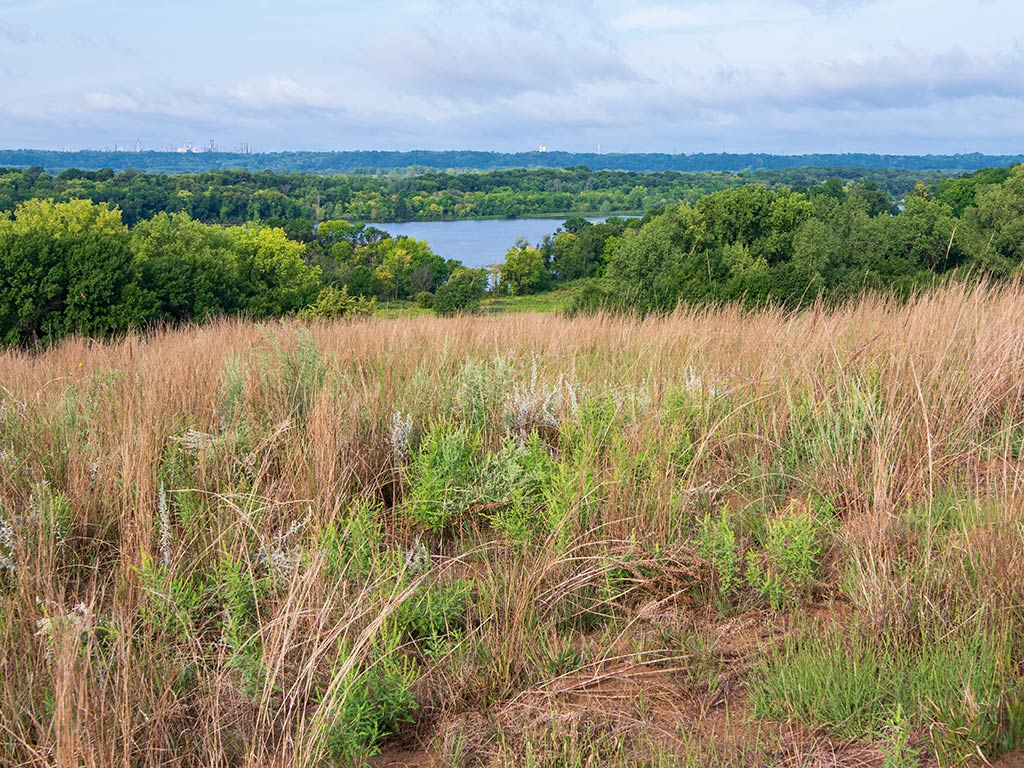
Pool 2: Minnesota
Pool 2 is perhaps the must-visit location on the Mississippi River, located between St Paul and Hastings, MN. You can fish year-round for Walleye, but they are strictly catch-and-release here.
This area boasts a healthy population of sizeable Walleye, and anglers favor fall and winter fishing here. Parks, like Fort Snelling, offer boat access, while sites like Grey Cloud Island provide plenty of shoreline to fish.
Pool 4: Wisconsin
Sitting between Dam 3 near Hager City and Dam 4 near Alma, WI, Pool 4 is Wisconsin’s premier Walleye fishing spot. You can launch from Everts Resort in Hager City, Bay Point Park, and Colville Park (both in Red Wing, MN). Bay Point Park is also popular among the locals when it comes to fishing from shore. Several lakes and backwaters in this pool make pre-planning a must for staying productive—and out of the way of barge traffic.
Pool 8: Minnesota and Wisconsin
Pool 8, situated between Dresbach, MN, and Genoa, WI, is another spot you should check out. Boat access is available from nearly 40 private and public landings, including places like Goose Island Campground near Stoddard, WI. Here, you’ll find camping amenities with a boat ramp. Stoddard Park and Wildcat Park attract shore anglers with features like fishing docks along this section of the Mississippi River.
Pool 10: Iowa
Another popular and productive section of the Mississippi is Pool 10, running between Harpers Ferry and Guttenburg, IA. Prairie du Chien is a prime boat location with launches at West Ceder Street, North Water Street, and Lawler Park. If you want to fish from the banks, try the shoreline by Lynxville, which locals assert is populated with lots of Sauger and Walleye.
When to Catch Walleye on the Mississippi River
Like many other freshwater species, Walleye move into shallow water in spring as they prepare to spawn. They’ll be hungry after the winter as well. That’s why it’s considered one of the best times of the year for anglers. Once spawning begins when the water temperatures hit 42–54ºF, the action slows as the fish focus on mating.
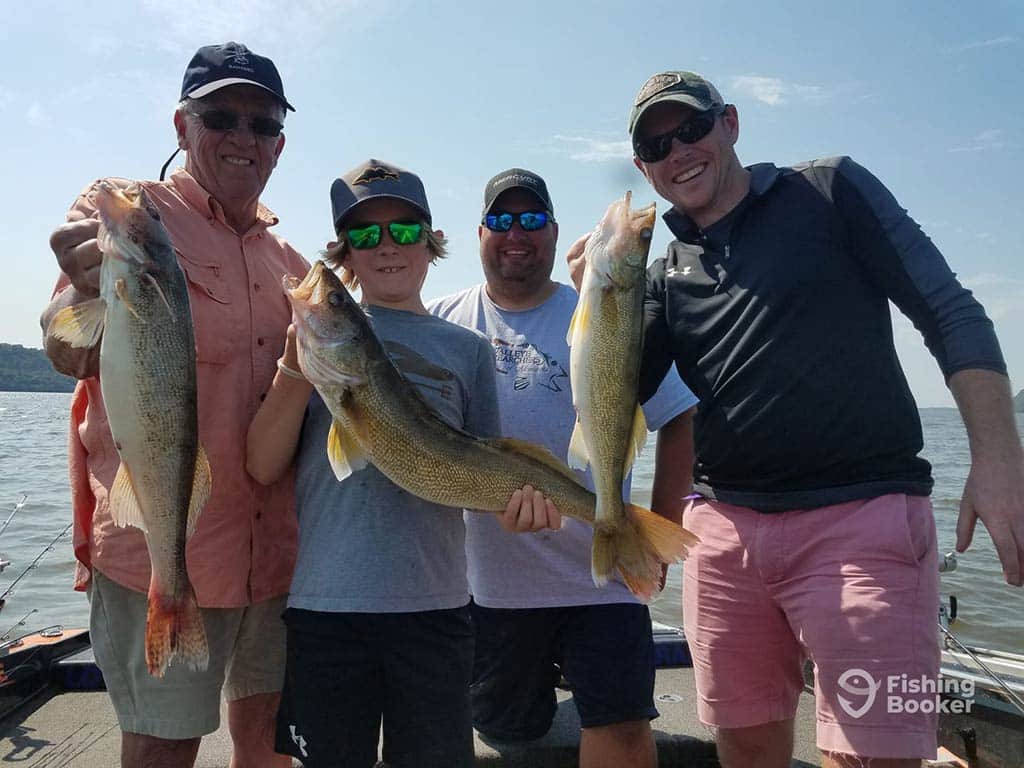
Walleye return to the shallow waters as temperatures begin cooling down around September. They’re here to bulk up before heading to deeper waters for the winter. The fall action lasts until the fish start moving deep when water temperatures drop below 40ºF.
If you’re new to catching Walleye, remember these fish are light sensitive. They have a membrane behind their retina, allowing them to see in low-light settings. This is ultimately what gives their eyes a milky appearance. It also makes bright light less tolerable, so they stay deeper during the day and move into shallow water to feed from dusk until dawn.
How to Catch Walleye on the Mississippi
So you know where and when to go Walleye Fishing on the Mississippi River, it’s now time to find out how to land that prized fish. Structure changes like the edge of weed beds, submerged road beds or islands, and points with drop-offs are good places to start. Scour holes and rocky bottoms in deeper water are ideal for summer and winter fishing.
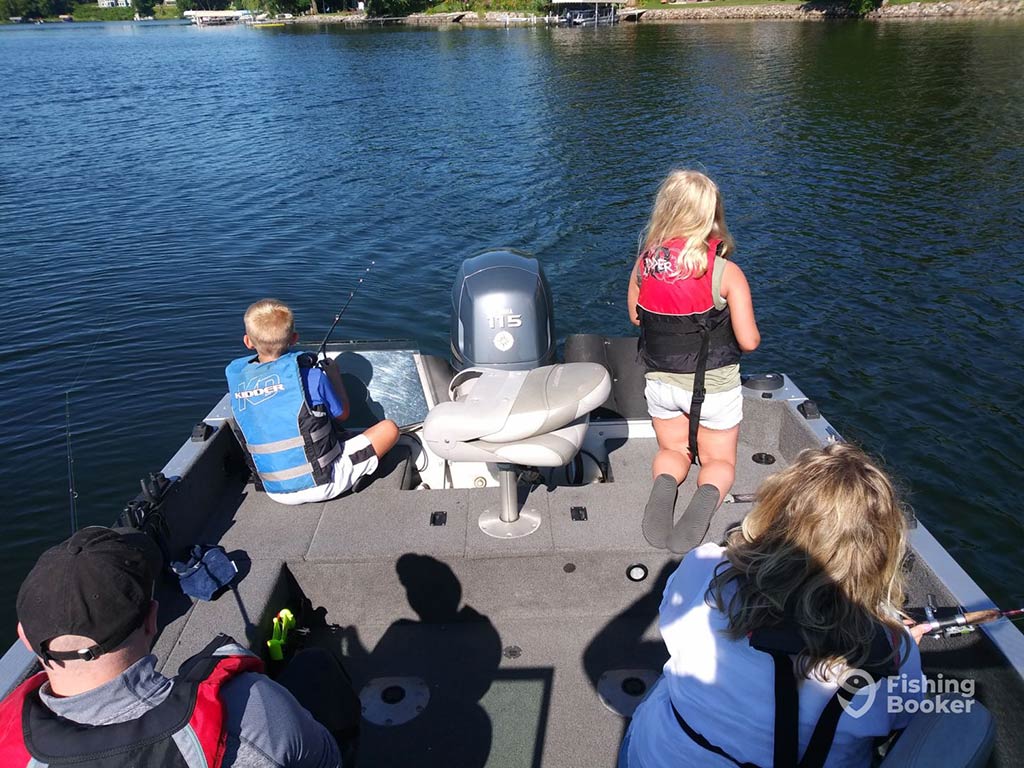
You can’t go wrong with trolling along the current in your boat. It might take longer when searching for moving schools during summer, but you can focus on moving around structures the rest of the year.
Fishing from shore requires finding the edges of holes, weed beds, or rocks. Look for shoreline access to multiple spots within walking distance throughout the year. Locals use a variety of common Walleye bait, such as casting hooks with bait fish, leeches, or worms. Large rapala or X-Rap crankbaits mimicking local food produce solid results when trolling. Spinners and spoons can add flash and vibration to draw hungry Walleye, and they move nicely through the current.
Jigging is also a good option from a boat, but you must keep the line vertical as you work the jig head. Cast upstream and retrieve at a casual pace. You’ll probably initially feel some light taps, so don’t want to burn through the area. When you feel that second hit and the weight of the fish on the line, you know it’s time to set the hook.
Mississippi River Walleye Regulations
Walleye regulations can vary depending on where you fish on the Mississippi River. Special rules for certain sections of the river take precedence over state Walleye rules.
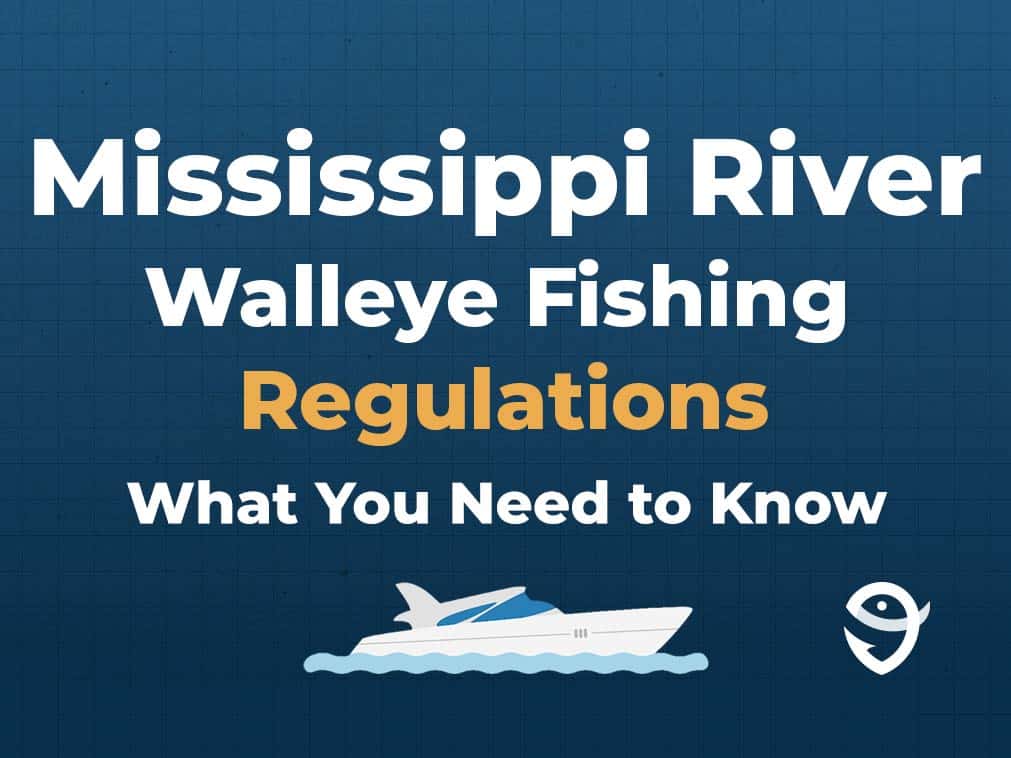
In Minnesota, for example, Walleye season begins in May and runs through the following February. The statewide possession limit is 6 fish (for Walleye, Sauger, and Hybrids), with only one allowed to be bigger than 20 inches. However, any Walleye caught in Pool 3 must be at least 15 inches, and Pool 2 between Hastings and Ford Dams is catch-and-release only.
Planning to fish the Mississippi River in Wisconsin? Walleye season runs from May through March in the state but is continuous in the Mississippi River. The daily possession limit is 5 fish for Walleye, Sauger, and Hybrids.
If you’re fishing the river in Iowa, there’s also a daily bag limit of 5 combined fish (Walleye, Sauger, and Hybrids) and 10 combined for any group or boat. While most of the state has no size restriction, the Mississippi River does. Walleye must be at least 15 inches, all specimens between 20 and 27 inches must be returned to the water immediately. You also can’t take more than one Walleye longer than 27 inches per day.
Illinois also offers access to the Mississippi River. Here, there’s a minimum size requirement of 14 inches for Walleye and a limit of 6 fish per day for Walleye, Sauger, and Hybrids combined. River-specific regulations indicate that Walleye must be at least 15 inches to keep, with similar possession limits except you can have only one fish longer than 27 inches, and all Walleye between 20 and 27 inches must be returned to the water immediately.
Walleye season in Missouri is year-round. Walleye and its close relative, Sauger, have daily limits of 8 fish, with a total possession limit of eight, too. The state regulation for Walleye is 15 inches minimum, but there’s actually no size restriction when fishing the Mississippi River.
Mississippi River Walleye Fishing FAQs
Old Man River Walleye Fishing: You’re All Set
So to wrap up: Walleye are native to the upper sections of the Mississippi River, and you’ll find some great fishing in many of the northern pools. If you have to choose between them, Pool 2 is probably the best option, but don’t discount fishing Pool 10 for a shot at some of the biggest Walleye the US has to offer.
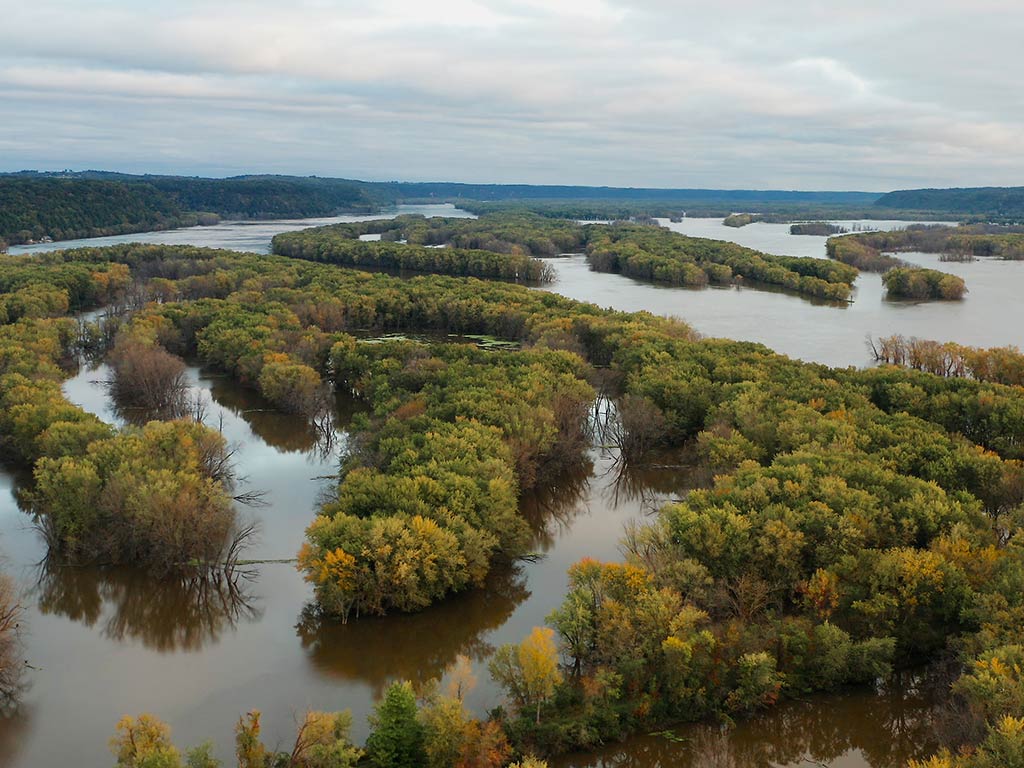
Unless you’re trolling deep waters in the summer looking for moving schools, try to find structures like submerged drop-offs, holes, and riffles. Work with the current and avoid fast retrieves no matter what bait or lure you use.
If you’re unfamiliar with the local rules or best techniques, pair up with a Mississippi River fishing charter, to help you get started. They’ll assist you in keeping on top of the regulations for the area you fish. Then, you’ll be on your way to enjoying one of the best Walleye waterways in the nation!
And now over to you! Have you ever been Walleye fishing in the Mississippi River? What’s your favorite spot? We’d love to hear from you in the comments below!
The post How to Fish for Walleye on the Mississippi River: An Angler’s Guide appeared first on FishingBooker Blog.
https://ift.tt/Xu4c5nE
0 Comments
Enregistrer un commentaire